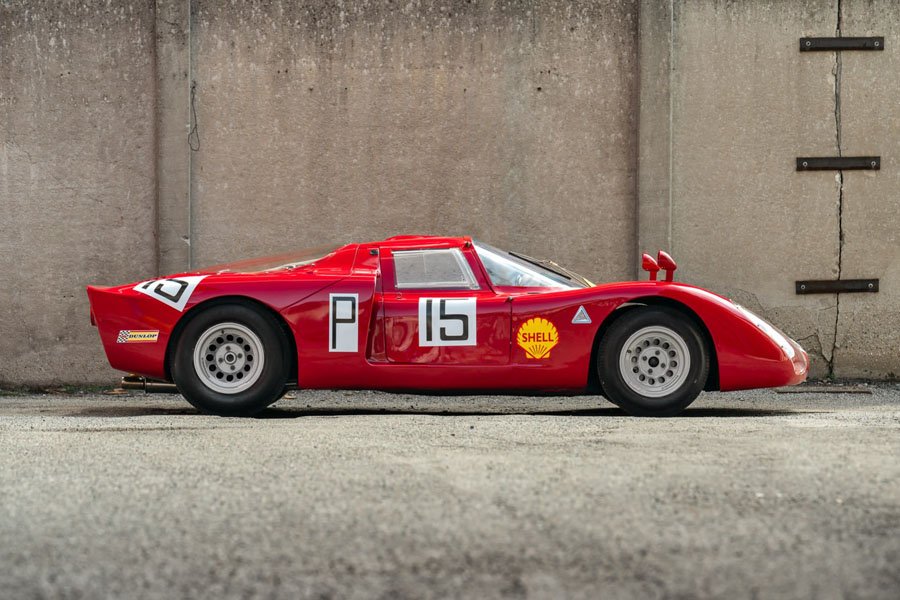One to Buy: ex-works 1968 Alfa Romeo Tipo 33/2
/ Ben Tyer
Alfa Romeo’s inaugural 1967 campaign with the Autodelta-developed Tipo 33 two-litre Group 6 Prototype was a mixed affair; while the Tipo 33 clearly had the speed to match its rivals from Porsche’s, poor reliability usually saw the Italian car retire from promising positions.
For 1968, Autodelta prepared a revised model dubbed the Tipo 33/2 which featured a new lightweight chassis, a completely different air-piercing body, revised cooling and all manner of other updates. An enlarged 2.5-litre engine came on stream mid-way through the season as well.

The ‘68 campaign proved a great success for Alfa Romeo as the Tipo 33/2 was even faster than its predecessor but also drastically more reliable. Notable highlights saw the 33/2 take World Sportscar Championship class wins at the Targa Florio, Nurburgring 1000km and Le Mans 24 Hours where a trio of works entries finished fourth, fifth and sixth overall.
Currently on offer with Girardo & Co. is one of those survivors from Alfa Romeo’s ‘68 campaign: chassis 026.

026 made its competition debut at round six of the World Sportscar Championship, the Nurburgring 1000km, where it was allocated to Nino Vaccarella and Herbert Schultze who qualified seventh. They went on to finish tenth overall and third in the two-litre Prototype category.
Chassis 026 was thereafter used primerily for hillclimbing, initially by Schultze and then its second owner, Michel Weber.

Today it is presented in superb condition, complete with its original engine and European road registration.






























































